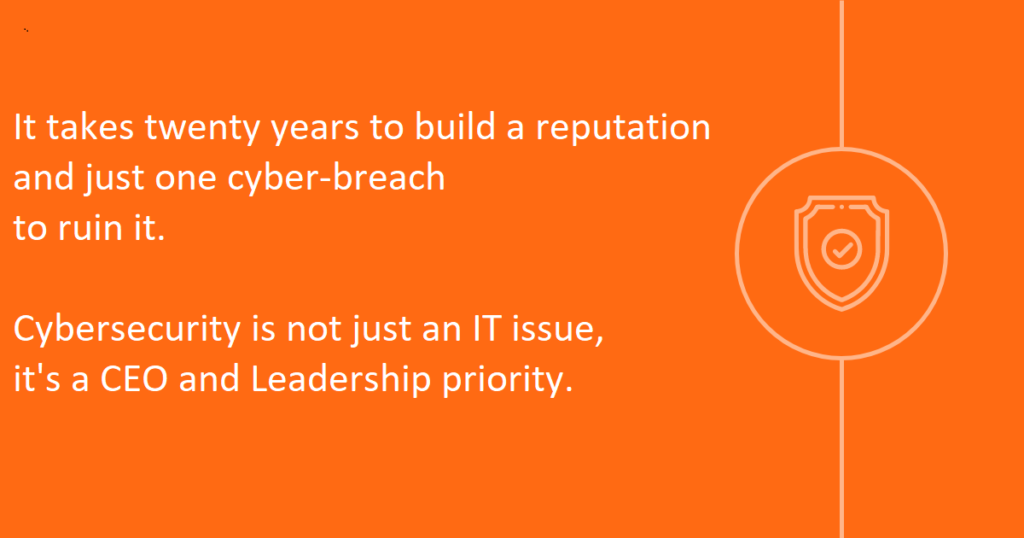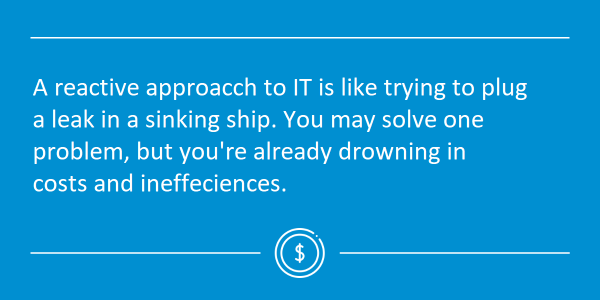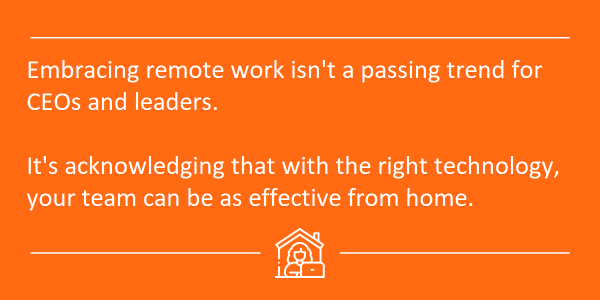
The bridge between business success and technology is undeniable in today’s digital climate. For leaders of small to midsized organizations and local governments, the connection is not just a matter of growth—it’s a matter of survival.
The stakes are high. One wrong move, one overlooked detail, and the consequences can reverberate through your organization, potentially derailing years of hard work.
While technology promises infinite potential, it also carries pitfalls that can be, quite literally, costly. This article delves into the three most common—and damaging—technology mistakes CEOs often make.
Any one of them could cost you everything.
These technology mistakes may seem like IT problems, but in reality, they require direct CEO and leadership involvement and oversight.
This article will identify and examine these 3 mistakes, their massive financial impact, and the steps you could take now to avoid them.
We get it. There’s a lot of noise and hype out there about cybersecurity.
And let’s be honest; for many CEOs and leaders, this constant bombardment can make it tempting to tune it all out, to see cybersecurity as just another trend or buzzword.
But here’s the truth: This isn’t about scare tactics or adding to the noise. It’s about the real, tangible risks that you face every day.
Cyber threats are evolving, and they’re targeting businesses big and small. As a CEO, it’s not just your data at risk; it’s your reputation, your bottom line, and the trust of your customers.
We’re not here to sell fear. We’re here to advocate for preparedness. By making cybersecurity an executive priority, you’re taking a proactive stance, ensuring that your business is protected and ready for whatever challenges come its way.
So, where do you start with cybersecurity?

Larger corporations may grab headlines, but SMBs and local governments, with their often-limited cybersecurity measures, are deemed low-hanging fruits by cyber criminals.
Studies consistently show that many breaches are caused not by sophisticated hacking but by human mistakes. Over 88% of data breaches are caused by an employee’s mistake.
To stay one step ahead of cyber threats, CEOs must closely examine their current online safety measures. This means checking regularly for weak spots and making a clear plan to fix them.
Beyond the direct financial implications, the reputation damage following a breach can be prolonged and severe, affecting trust and future business.
You’ve heard the stats on how much a breach can cost your company: Today, the average cost of a cyber breach is $4.9 million. But beyond financial losses, cyber breaches can lead to steep regulatory fines and potential lawsuits. It’s not just an IT cost; it’s a direct threat to your bottom line and your future.
These networks are fed vast amounts of data and learn patterns and relationships. The more data it processes, the more refined its understanding becomes.
Cybersecurity isn’t just an IT issue; it’s a leadership one. CEOs set the tone and direction for their organizations. By prioritizing cybersecurity:

Recognize that, as CEO, you are privy to a bird’s eye view of the organization. Use this vantage point to bridge the gap between operational intricacies and cybersecurity needs. No one else has your combined breadth and depth of insight.
Schedule a sit-down with your IT lead, even if it’s an external consultant. Ask them the tough questions: “What are our top three vulnerabilities? How would a breach impact us tomorrow?” Personalize this information; these aren’t abstract company vulnerabilities but risks to your legacy.
When carving out next year’s budget, don’t just allocate funds to cybersecurity; earmark them for specific challenges. Specify and visualize where each dollar goes, whether it’s bolstering your firewall or investing in phishing resistance training.
Don’t just approve cybersecurity training; introduce it. Your personal message at the beginning of every training module can emphasize its importance. Show your team that their leader is invested in their digital safety.

Too many organizations reactively deal with obsolete systems and purchasing trends rather than proactively planning needs. This leads to:
Trying to handle intensifying security threats and complex strategy alone is difficult for time-strapped CEOs. Having the right managed IT services provider to guide efforts is crucial.
Seeking an expert partner who takes a hands-on, long-term strategic approach enables you to focus on your business while leveraging enterprise-grade skills and resources.

Remote work isn’t a fleeting trend; it’s the fabric of today’s operational reality. CEOs who view remote work merely as a pandemic-driven necessity risk missing the bigger picture.
By embracing the long-term potential of remote work and technology, businesses can tap into a broader talent pool, reduce overhead costs, and foster innovation.
Many CEOs may feel they’ve adapted to remote work by allowing employees to log in from home. But the real challenge lies deeper:
Remote work is more than a necessary adaptation; it’s a competitive edge. CEOs can:

Adopt technology in your daily routine. Familiarize yourself with tools your team uses, and make your presence felt in virtual spaces. If CEOs are visible and active online, it sets a tone for the rest of the team.
Ensure all employees have access to a consistent set of tools. Consider enterprise solutions that streamline communication, collaboration, and security.
Have a monthly chat with your IT head. Understand the challenges faced, ensure up-to-date security protocols, and get feedback on what tools the organization might need next.
Create channels where employees can communicate their remote work challenges and needs. It’s not enough to provide the tools; understanding how they’re used and where they fall short is key.
Regularly update and improve remote work training processes. Ensure new hires feel integrated and understand the company’s remote work culture and expectations from day one.
CEOs hold the reins to shape their organization’s remote work policies. Understanding its nuances and potential allows them to position their businesses for resilience and growth in an increasingly digital-first world.
Technology is not a sideline concern for CEOs of small to mid-sized organizations and local governments; it’s central to your success. The three mistakes highlighted in this article emphasize the urgent need for you to be directly involved in shaping your organization’s IT and technology direction.
The Bottom Line: Your role isn’t just to delegate technology decisions but to understand them. In the age of rapid digital transformation, standing on the sidelines is not an option. Your organization’s profitability, reputation, and future depend on your choices regarding technology and cybersecurity.
Your organization’s resilience, profitability, and capacity to grow are deeply intertwined with its technological foundation.
This foundation goes beyond just software or servers—it encompasses the individuals who oversee, uphold, and advance it. Having the right IT and technology support, whether internal or outsourced, isn’t merely an expense; it’s a strategic investment to ensure your organization excels in the digital age.
Ensure you invest time and resources into securing and collaborating with a team or provider that genuinely understands your goals and can guide you toward them.
In closing, be proactive. Dive deep into understanding your organization’s technological needs, collaborate closely with IT experts, and make informed decisions. By doing so, you safeguard your organization and position it for growth and continued success in the digital era.
To continue the conversation, here are two articles written for CEOs and leaders that you may be helpful:
Or, if you have more immediate needs and would like to speak with one of our IT Advisors, click here:
Lorem ipsum dolor sit amet, consectetur adipiscing elit. Ut elit tellus, luctus nec ullamcorper mattis, pulvinar dapibus leo.